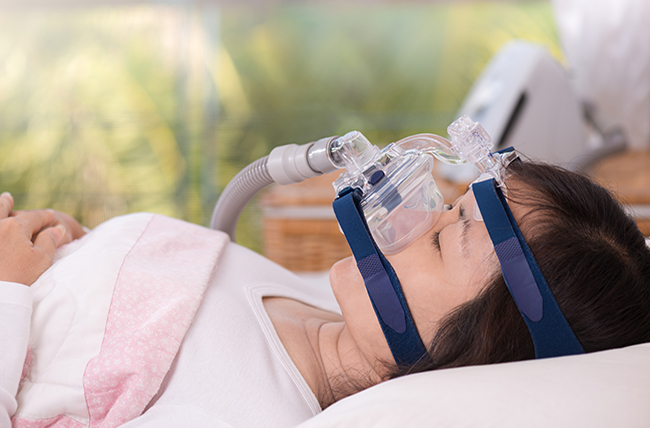How does an Oral Appliance Work to Treat Sleep Apnea?
Sleep apnea, a common sleep disorder, can wreak havoc on one's health and quality of life. It often leads to disruptive snoring and, more alarmingly, repeated pauses in breathing during sleep. Fortunately, there are several treatment options available for managing sleep apnea, and one of the increasingly popular methods is oral appliance therapy. In this article, we will explore how oral appliances work to treat sleep apnea and snoring, shedding light on this innovative and effective solution.
Understanding Sleep Apnea and Snoring
Before diving into the specifics of oral appliance therapy, it's crucial to grasp the underlying issues of sleep apnea and snoring.
- Sleep Apnea: Sleep apnea is a sleep disorder characterized by brief interruptions in breathing during sleep. These pauses in breathing can occur numerous times throughout the night, leading to fragmented sleep and a range of health issues. The two main types of sleep apnea are obstructive sleep apnea (OSA) and central sleep apnea (CSA), with OSA being the most common.
- Snoring: Snoring is the sound produced when airflow through the mouth and throat is partially blocked during sleep. It's a common symptom of sleep apnea, but not everyone who snores has sleep apnea. Snoring can disrupt not only the sleep of the snorer but also that of their sleeping partner.
Oral Appliance Therapy: A Non-Invasive Solution
Oral appliance therapy, also known as mandibular advancement therapy, is a non-invasive treatment option primarily used for mild to moderate obstructive sleep apnea and snoring. This therapy involves the use of a custom-made oral appliance, similar in appearance to a sports mouthguard or a retainer, that is worn during sleep.
How Does an Oral Appliance Work?
An oral appliance serves two primary functions in the treatment of sleep apnea and snoring:
- Repositioning the Jaw and Tongue: The oral appliance is designed to reposition the lower jaw and tongue slightly forward and down. By doing so, it helps to keep the airway open and prevent its collapse during sleep, reducing the instances of apnea (pauses in breathing) and snoring.
- Stabilizing Soft Tissues: The appliance also stabilizes the soft tissues at the back of the throat, preventing them from collapsing and obstructing the airway. This stabilization ensures a continuous flow of air, allowing the individual to breathe more freely throughout the night.

The Customization Process
Each oral appliance used in therapy is custom-made to fit the patient's mouth comfortably and securely. The process typically involves the following steps:
- Consultation: A sleep specialist or dentist specializing in sleep medicine evaluates the patient's condition, including the severity of sleep apnea snoring.
- Impressions: Precise impressions of the patient's upper and lower teeth are taken to create a custom-fit appliance.
- Fitting: Once the appliance is ready, the patient returns for a fitting to ensure it fits comfortably and works effectively.
- Adjustments: Periodic follow-up appointments may be necessary to make any necessary adjustments to the appliance for optimal results.
Advantages of Oral Appliance Therapy
Oral appliance therapy offers several advantages as a treatment option for sleep apnea and snoring:
- Non-Invasive: Unlike some other treatments, such as continuous positive airway pressure (CPAP) therapy, oral appliances do not require masks or tubes and are generally well-tolerated by users.
- Improved Comfort: The custom-fit design ensures comfort and minimizes any potential discomfort associated with treatment.
- Portability: Oral appliances are small and easily portable, making them convenient for travel.
- Enhanced Sleep Quality: By reducing the frequency of apnea episodes and snoring, oral appliances can lead to improved sleep quality for both the patient and their sleeping partner.
- Increased Compliance: The comfort and ease of use associated with oral appliances often result in higher patient compliance compared to other treatments.
Considerations and Conclusion
While oral appliance therapy is a valuable and effective treatment for sleep apnea and snoring, it may not be suitable for everyone. Severe cases of sleep apnea may require alternative treatments, such as CPAP therapy or surgical interventions. It is essential to consult with a sleep specialist or dentist specializing in sleep medicine to determine the most appropriate treatment plan for your specific condition.
In conclusion, oral appliance therapy offers a non-invasive and comfortable solution for managing sleep apnea and snoring. By repositioning the jaw and stabilizing soft tissues, these custom-made devices can significantly improve sleep quality and overall well-being. If you or a loved one is struggling with sleep apnea or snoring, consider exploring oral appliance therapy as a viable treatment option with the guidance of a healthcare professional.

Comments
Post a Comment